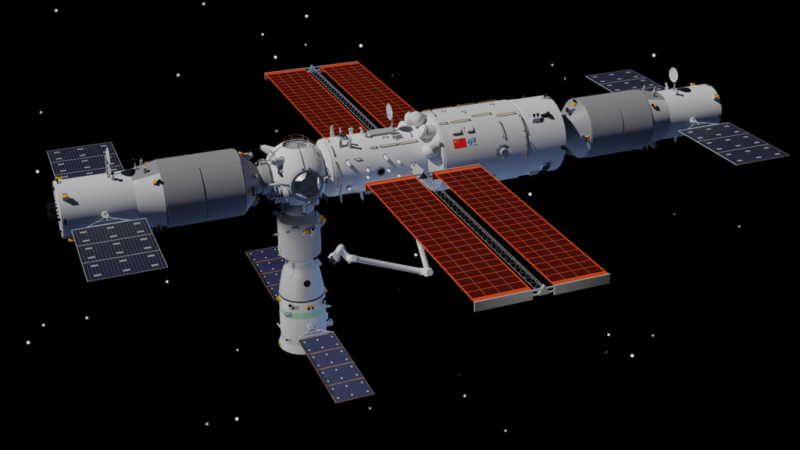The now-iconic photo of New York on 9/11 taken by Culbertson from space (NASA)
If you were old enough, you remember exactly where you were on September 11, 2001 when you heard about the towers falling. Personally, I was on my way home from school after being let out early as a result of the attacks, when my mother told me what had happened. We had visited Washington, D.C., just a few months before, so while I wasn’t entirely familiar with the World Trade Center, I knew exactly what the Pentagon was; the fact it had been attacked shocked me. For NASA astronaut Capt. Frank L. Culbertson, Jr., who was in space aboard the International Space Station, the attacks on 9/11 were personal.
A South Carolina native, Culbertson attended the United States Naval Academy where he received a Bachelor of Science degree in Aerospace Engineering. While at Annapolis, he was also a member of the Academy’s varsity rowing and wrestling teams. Following his graduation and commissioning in 1971, Ens. Culbertson served aboard the USS Fox in the Gulf of Tonkin before he reported to NAS Pensacola for flight training.
Culbertson earned his designation as a Naval Aviator in May 1973. Flying the F-4 Phantom, he served with VF-121 at NAS Miramar, VF-151 aboard the USS Midway out of Yokosuka, and with the Air Force 426th Tactical Fighter Training Squadron at Luke AFB where he served as a Weapons and Tactics Instructor. Culbertson then served as the Catapult and Arresting Gear Officer aboard the USS John F. Kennedy until May 1981 when he was selected to attend the U.S. Naval Test Pilot School at NAS Patuxent River.

A VF-151 ‘Vigilantes’ F-4 takes off (U.S. Navy)
Culbertson graduated from Test Pilot School with distinction in June 1982 and was assigned to the Carrier Systems Branch of the Strike Aircraft Test Directorate. He served as the Program Manager for all F-4 testing and as a test pilot for automatic carrier landing system tests and carrier suitability. Culbertson took part in fleet replacement training in the F-14 Tomcat with VF-101 at NAS Oceana from January 1984 until his selection for the astronaut training program.
Following his selection as a NASA astronaut candidate in May 1984, Culbertson completed basic astronaut training in June 1985. Since then, he worked on redesigning and testing Space Shuttle components, served as a launch support team member on four Shuttle flights, and assisted with the Challenger accident investigations.

Culbertson’s official astronaut portrait (NASA)
Culbertson’s first space flight was a five-day mission from November 15-20, 1990 aboard STS-38 Atlantis. His second space flight was a 10 day mission from September 12-22, 1993 aboard STS-51 Discovery. On August 10, 2001, Culbertson made his third space flight as the only American crew member of Expedition 3 to the ISS. He lived and worked aboard the ISS for 129 days, and was in command of the station for 117 days. On 9/11, as the ISS passed over the New York City area, Culbertson took photographs of the smoke rising from Ground Zero in lower Manhattan.
He later learned that American Airlines Flight 77, the aircraft that crashed into the Pentagon, had been captained by a friend of his from the Navy. Charles “Chic” Burlingame III was the pilot of Flight 77 before it was hijacked following its takeoff from Washington Dulles International Airport. Culbertson and Burlingame had both been Midshipmen, Aeronautical Engineering students, and members of the Academy’s Drum Bugle Corps together at Annapolis. Both men also went on to attend flight school and become F-4 fighter pilots. With his trumpet aboard the ISS, Culbertson played taps in honor of his friend and all the other victims of the attacks that day. The Expedition 3 crew left the ISS aboard STS-108 Endeavour and landed at Kennedy Space Center on December 17, 2001.

Culbertson’s official mission photograph for Expedition 3 (NASA)
Culbertson retired the next year on August 24. Over his long career in the Navy and with NASA, he logged over 8,900 flight hours in 55 different types of aircraft, and made 450 carrier landings, including over 350 arrested landings. His awards and honors include the Legion of Merit, Distinguished Flying Cross, NASA Outstanding Leadership Medal, and Humanitarian Service Medal. In 2010, he was inducted into the U.S. Astronaut Hall of Fame. Of all his many achievements, Culbertson is still best known for being the only American not on Earth on 9/11.


























